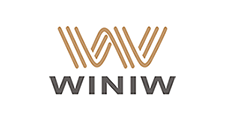What is Meltblown Nonwoven Fabric (Melt-blown Non-woven Fabric)?
Meltblown Nonwoven Fabric is a kind of nonwoven fabric, which the high-speed hot air flow is used to draw the thin polymer melt stream extruded from the die orifice, thereby forming ultra-fine fibers and collecting them on the condensate screen or roller, and at the same time bonding themselves to become the melt-blown method Non-woven.
Melt-blown non-woven fabrics use polypropylene as the main raw material, and the fiber diameter can reach 1 to 5 microns. These ultra-fine fibers with unique capillary structure increase the number and surface area of fibers per unit area, thereby making the melt-blown fabrics have good filtration. It can be used in the fields of air, liquid filter materials, insulation materials, absorption materials, mask materials, thermal insulation materials and wiping cloths.
The production process of Meltblown Nonwoven Fabric:
polymer feeding — melt extrusion — fiber formation — fiber cooling — netting — reinforcement into cloth.
Advantages of Meltblown Nonwoven Fabric:
Melt-blown non-woven fabric has good waterproof, breathable, high filtration efficiency due to its special structure and the raw materials used. It has a variety of functions such as bacteria accumulation, poison filtration, heat insulation, heat preservation, insulation, non-toxic and non-irritating. After hydrophilic, embossing and compound treatment, the product has the functions of water absorption, cleansing, moisturizing, beautiful appearance and certain friction.
Applications of Meltblown Nonwoven Fabric:
Melt-blown non-woven fabrics are widely used in industry, furniture, automobiles, hotels, kitchens, filtration, clothing, leather, instruments, computers, laboratories, laboratories, laboratories, general machinery assembly and maintenance, molds, etc.
The main usages of Meltblown Nonwoven Fabrics can be roughly divided into:
1.Medical and sanitary non-woven fabrics: surgical gowns, protective clothing, sterilization wraps, masks, diapers, civilian wipes, wipes, wet facial towels, magic towels, soft towel rolls, beauty supplies, sanitary napkins, hygiene Pads and disposable sanitary cloths, etc .;
2. Non-woven fabrics for home decoration: wall stickers, tablecloths, bed sheets, bed covers, etc;
3. Non-woven fabrics for clothing: lining, adhesive lining, flakes, shaped cotton, various synthetic leather base fabrics, etc .;
4. Industrial non-woven fabrics; filter materials, insulation materials, cement packaging bags, geotextiles, covering cloths, etc .;
5. Non-woven fabrics for agriculture: crop protection fabrics, seedling raising fabrics, irrigation fabrics, thermal insulation curtains, etc .;
6. Other non-woven fabrics: space cotton, thermal insulation and sound insulation materials, oil-absorbing felt, cigarette filter, tea bags, etc.


